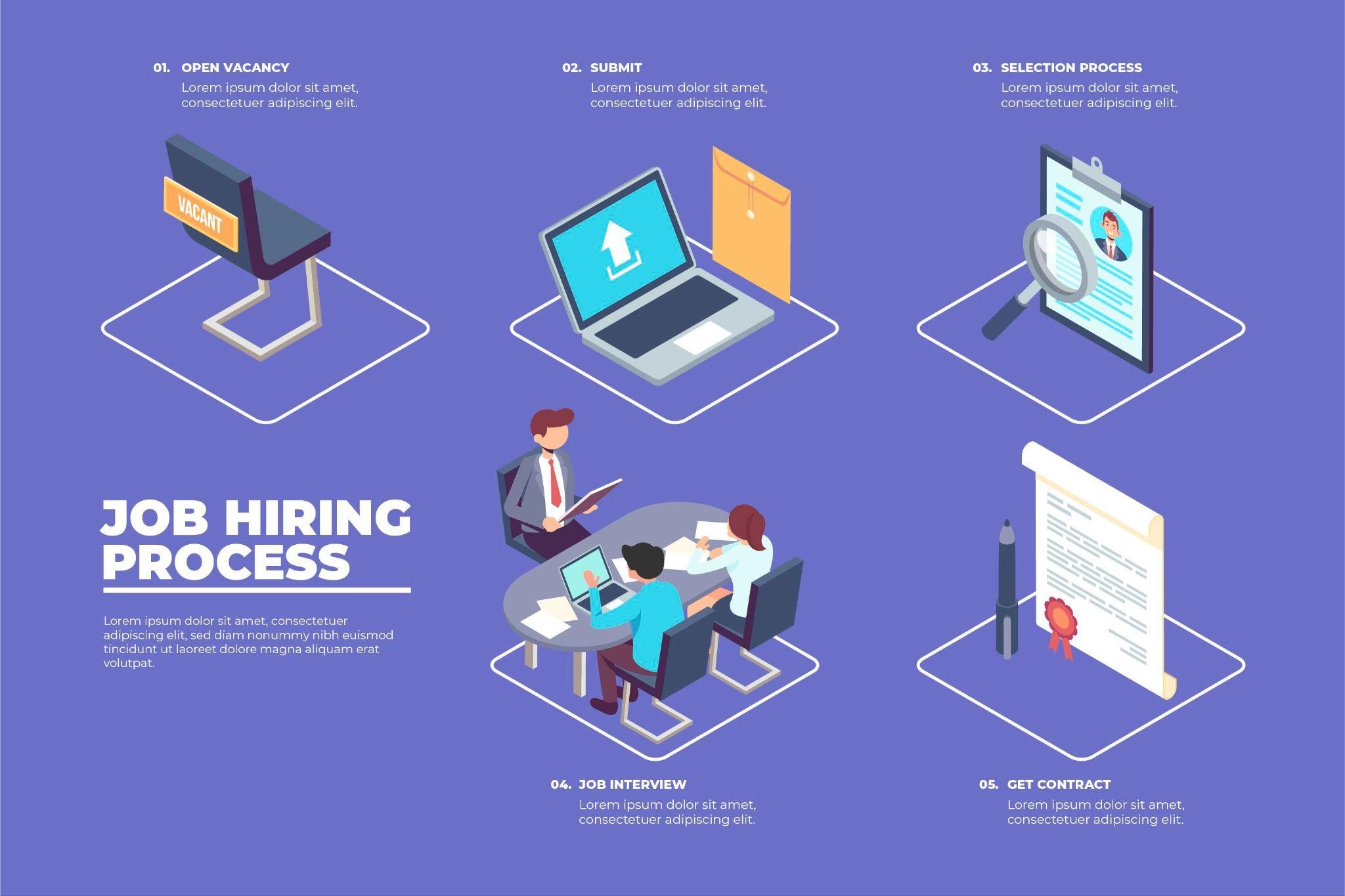
It costs more to fill a post for a longer period. You must include in the revenue your company would have earned with the proper individual on board that you are losing out on while the post is vacant, in addition to the costs directly related to advertising for the position and choosing the best candidate.
What should the time frame of your hiring procedure be?
The majority of businesses use a standard hiring procedure. The process begins when the hiring manager meets with the human resources division and discusses their criteria. The recruiter then receives applications after posting a job posting on hiring platforms.
Those who make it past the screening process are subjected to one or more interviews following an initial assessment of their resumes. Companies might conduct technical skills testing before selecting if the role demands technological ability. The hiring manager then extends a job offer to the chosen candidate.
The time it takes to fill a position, or time-to-fill, differs between businesses and industries. For instance, it takes an average of 54 days to fill government posts, according to a survey from Glassdoor Economic Research. Hiring a software engineer for a startup will also take a sizable number of days.
Restaurant employment, on the other hand, takes just 10 days on average. Although hiring restaurant personnel may be simpler, keeping them on the job is more difficult. In general, it takes American businesses 23 days on average to hire a new employee.
Tips to improve your hiring process
Use of ATS
According to Raj Harshel, senior recruiter at Ducknowl, “Applicant Tracking Systems (ATS) have revolutionized how organizations handle recruitment, transforming the hiring process into a streamlined and efficient endeavor." ATS platforms serve as centralized repositories for all candidate information, including resumes, cover letters, and communication histories. This eliminates the need for physical paperwork and scattered documents. ATS employs AI algorithms to analyze and categorize resumes based on predefined criteria. This accelerates the initial screening process and shortlists candidates closely matching the job requirements.
ATS enables the automated distribution of job openings to job board aggregators and social media platforms, reaching a wider audience with minimal effort. ATS allows recruiters to search the database for specific skills, experiences, or qualifications, making candidate sourcing more targeted and effective. ATS facilitates collaboration among hiring team members by providing a platform to assess candidates, share feedback, and make informed decisions.
Define clear job descriptions.
Crafting precise and comprehensive job descriptions is a critical step in the recruitment process that lays the foundation for attracting the right candidates. A well-crafted job description not only outlines the roles and responsibilities of the position but also sets expectations and helps candidates assess their fit for the role, which can be further refined through skill assessment software during the initial screening phase. Begin with a clear and indicative job title that accurately reflects the position's nature. Follow it with a concise summary that gives an overview of the role's purpose and its place within the organization.
Clearly outline the day-to-day tasks, responsibilities, and objectives that the candidate will be responsible for. Use bullet points to make it easily scannable. Specify the qualifications, education, certifications, and skills required for the role. Differentiate between must-haves and nice-to-haves to help candidates gauge their eligibility.
Prioritize candidate experience
In today's competitive job market, providing an exceptional candidate experience is no longer just a courtesy; it's a strategic imperative. A positive candidate experience not only reflects well on your organization but also attracts top talent, enhances your employer's brand, and contributes to the overall success of your recruitment efforts. Keep candidates informed at every step of the process. Inform them about the stages, timelines, and what to expect next. Lack of communication can lead to frustration and a negative experience.
Ensure that your online application process is user-friendly, mobile-responsive, and doesn't require excessive steps. A complicated or lengthy application can deter qualified candidates. Address candidates by their names and reference specific details from their resumes or cover letters. Personalization shows that you value them as individuals.
Create an employee referral program.
An employee referral program is a strategic initiative adopted by organizations to harness the power of their existing workforce by identifying and referring potential candidates for job openings. This program not only facilitates the recruitment process but also strengthens employee engagement and contributes to building a strong and talented workforce. Organizations typically offer incentives or rewards to employees who refer candidates who are successfully hired. These rewards can range from monetary bonuses to gift cards, extra vacation days, or even special recognition. Platforms make it easy to reward employees with personalized and efficient gift card solutions, adding a thoughtful touch to the referral incentive process.
The program's details, benefits, and success stories are communicated to employees through various channels, such as internal newsletters, company meetings, or dedicated communication platforms. Employees are provided with a user-friendly and accessible platform to submit referrals. This can be an online form, an email address, or even a dedicated portal within the company's intranet.
Engage hiring managers
Hiring managers play a pivotal role in the recruitment process, as they possess deep insights into the specific skills, experiences, and qualities required for their teams. Engaging hiring managers effectively not only streamlines the process but also enhances the quality of hires. Involve hiring managers from the beginning. Collaborate with them to create accurate and detailed job descriptions that reflect the actual needs of the team.
Maintain open lines of communication with hiring managers. Regularly update them on the progress of the recruitment process and seek their feedback. Ensure that both recruiters and hiring managers are on the same page regarding candidate qualifications, interview processes, and timelines. Schedule regular check-in meetings to discuss candidate progress, challenges, and adjustments to the recruitment strategy if necessary.



